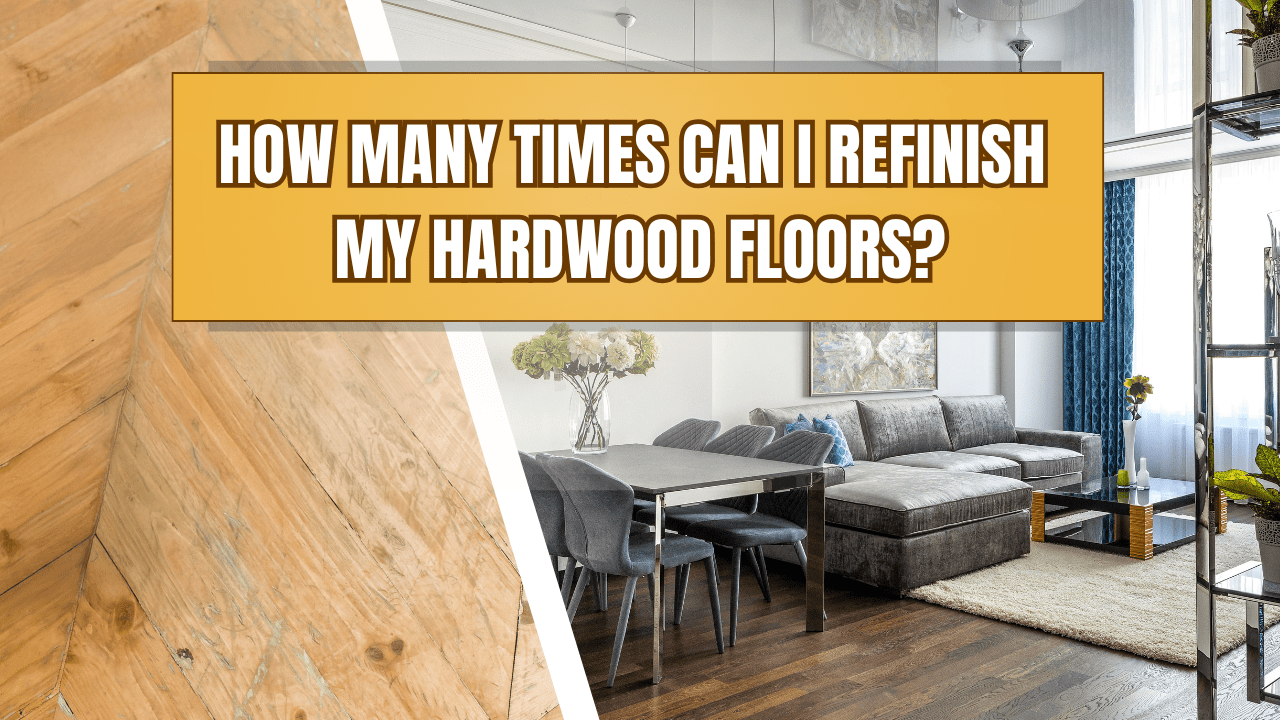
The Refinishing Limit: Maximizing Your Hardwood Floor’s Longevity
Hardwood floors are more than just a beautiful addition to your home—they’re an investment that can last for generations with proper care. One of the most significant advantages of hardwood flooring is the ability to refinish it when wear and tear take their toll. But a question we hear frequently at Pasquale Hardwood Flooring is: “How many times can I refinish my hardwood floors?” The answer isn’t as straightforward as you might think, as several factors determine your floor’s refinishing potential.
Understanding Hardwood Floor Construction
Before we dive into numbers, it’s important to understand what we’re working with. Hardwood floors come in two primary types:
Solid Hardwood: These floors are milled from a single piece of wood, typically 3/4″ thick. The entire thickness is usable wood, which gives them excellent refinishing potential.
Engineered Hardwood: These consist of a real hardwood veneer bonded to multiple layers of plywood or high-density fiberboard. Only the top veneer (wear layer) can be sanded, which limits refinishing opportunities.
The key term here is “wear layer”—the portion of wood above the tongue and groove that can be sanded down during refinishing. With each refinishing, approximately 1/32″ to 1/16” of wood is removed, depending on the severity of damage and the refinishing method used.
Factors That Determine Refinishing Capacity
1. Wood Type and Thickness
Standard solid hardwood flooring (3/4″ thick) typically has about 1/4″ of wood above the tongue and groove. This means theoretically, you could refinish it 4-8 times. However, this number varies based on:
- Species hardness: Softer woods like pine may show wear faster than harder species like oak or maple
- Plank thickness: Thinner solid hardwood planks (5/16″ or 3/8″) have less material to work with
- Engineered flooring wear layer: These range from thin (0.6mm) to substantial (6mm+), dramatically affecting refinishing potential
2. Previous Refinishing History
If you’ve purchased a home with existing hardwood floors, they may have already been refinished multiple times. Signs that floors have a limited refinishing future include:
- Exposed nail heads or staples becoming visible
- Thinning above the tongue and groove joint
- Floors that sound hollow or feel springy when walked on
- Visible gaps between boards that worsen after each refinishing
3. Installation Method and Floor Condition
A professional can often measure the remaining wear layer to determine how many refinishes you have left.
How your floor was installed matters significantly:
- Nail-down installation: Traditional method that typically allows for maximum refinishing
- Floating floors: Generally cannot be refinished as many times
- Floors with extensive repairs: Patches and filled areas may limit uniform sanding
- Cupped or warped boards: Require deeper sanding to level, reducing future refinishing opportunities

4. Professional vs. DIY Refinishing
Who does the refinishing and how it’s done significantly impacts your floor’s longevity:
- Professional sanders remove less material per refinishing (approximately 1/32″)
- DIY equipment often removes more wood (up to 1/16″ or more)
- Modern dustless equipment tends to be more precise and controlled
- Aggressive sanding to remove deep scratches or stains reduces future refinishing potential
Typical Refinishing Numbers
As a general guideline:
- Traditional 3/4″ solid hardwood: 4-6 refinishes over its lifetime
- Engineered hardwood with 2mm wear layer: 1-2 light refinishes
- Engineered hardwood with 4mm+ wear layer: 2-3 refinishes
- Historic pine or fir floors: Often limited due to previous refinishing and softness of wood
Extending Your Floor’s Refinishing Potential
You can maximize the number of possible refinishes through several strategies:
Screening vs. Full Sanding
Not every floor refresh requires aggressive sanding. Screening (also called buffing) removes only the finish without touching the wood beneath. This process:
- Addresses surface scratches and wear
- Allows for recoating with fresh polyurethane
- Doesn’t count against your total refinishing potential
- Works best when damage hasn’t penetrated through to the wood
Maintenance Practices That Reduce Refinishing Frequency
- Use furniture pads to prevent scratching
- Place rugs in high-traffic areas
- Clean regularly with appropriate hardwood cleaners
- Avoid water damage and excessive moisture
- Recoat with polyurethane before wear reaches the wood
- Keep pets’ nails trimmed to minimize scratching
When to Consider Replacement Instead of Refinishing
Sometimes replacement makes more sense than refinishing:
- When the wear layer is completely depleted
- If the floor has structural issues or extensive damage
- When the cost of refinishing approaches replacement cost
- If you want to change to a different wood species or style
Making Smart Decisions About Your Floors
How to Assess Your Specific Floors
- Check the edges: Look at board edges where they meet walls or transitions to see total thickness
- Examine exposed areas: Heating vents or transitions can reveal cross-sections
- Consult installation records: Original paperwork may indicate floor type and thickness
- Professional assessment: A flooring expert can provide the most accurate evaluation
Questions to Ask Your Refinishing Professional
- How much wear layer remains on my floors?
- What sanding method will you use to preserve wood?
- Can you show me examples of similar refinishing projects?
- Would screening rather than full sanding work for my situation?
- How can I maximize the time between refinishes?
The Bottom Line
While there’s no universal answer to how many times you can refinish hardwood floors, understanding the factors at play helps you make informed decisions. With proper care and professional refinishing, your hardwood floors can remain beautiful for decades or even centuries.
At Pasquale Hardwood Flooring, we evaluate each floor individually to determine the best approach for extending its life while maintaining its beauty. Whether your floors need their first refinishing or you’re wondering if they can handle one more, our experts can help you understand your options and make the choice that best preserves your investment.
Frequently Asked Questions
Q: Can engineered hardwood floors be refinished? A: Yes, but with limitations. Engineered floors with wear layers of 2mm or thicker can typically be refinished 1-3 times, depending on wear layer thickness.
Q: How do I know if my floors can be refinished again? A: Look for exposed nail heads, thinning above the tongue and groove, or have a professional measure the remaining wear layer.
Q: How often should hardwood floors be refinished? A: Typically every 7-10 years for residential settings with normal wear, though high-traffic areas may need attention sooner.
Q: Does refinishing hardwood floors increase home value? A: Yes, beautifully maintained hardwood floors are consistently cited as a valuable feature for home buyers and can increase resale value.
Q: What’s the difference between refinishing and recoating? A: Refinishing involves sanding down to bare wood and applying new stain and finish. Recoating simply adds a new layer of polyurethane without sanding the wood itself.
